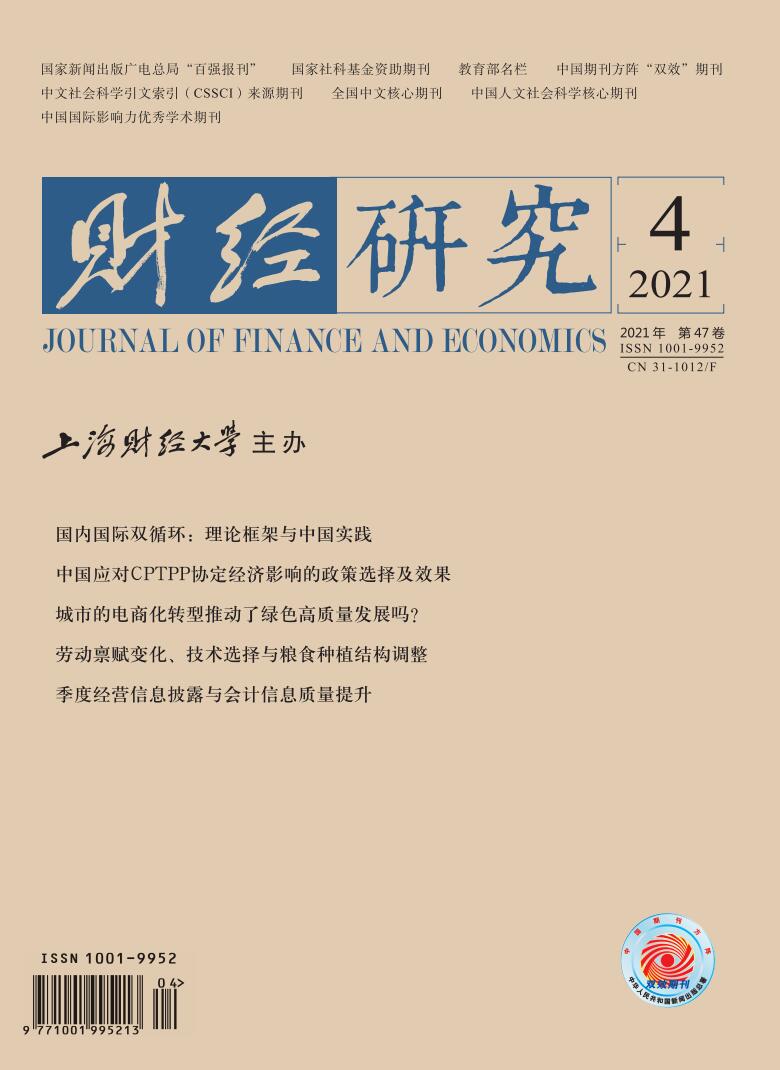文章以信号传递理论为基础,将年报语调(管理层的“言”)与内部人交易(管理层的“行”)视作同一主体发送的两个传递公司未来价值的信号,检验了投资者能否甄别两个信号的不一致程度。结果表明,若年报公布后发生了内部人减持行为,则年报语调的积极程度与内部人减持后的短期市场反应显著负相关。这说明前后信号相左时,市场会利用内部人交易信号去修正之前年报语调信号所形成的错误预期,即市场能够甄别管理层的“靖言庸违”。
市场能够甄别管理层的“靖言庸违”吗?——来自年报语调与内部人交易的经验证据
摘要
参考文献
摘要
1 陈小林,孔东民. 机构投资者信息搜寻、公开信息透明度与私有信息套利[J]. 南开管理评论,2012,(1):113−122. DOI:10.3969/j.issn.1008-3448.2012.01.013
6 王嘉鑫,张龙平. 管理层语调操纵、职业谨慎与审计决策−基于年报文本分析的经验证据[J]. 中南财经政法大学学报,2020,(4):3−14. DOI:10.3969/j.issn.1003-5230.2020.04.001
7 谢德仁,林乐. 管理层语调能预示公司未来业绩吗?−基于我国上市公司年度业绩说明会的文本分析[J]. 会计研究,2015,(2):20−27. DOI:10.3969/j.issn.1003-2886.2015.02.003
11 曾庆生,周波,张程,等. 年报语调与内部人交易:“表里如一”还是“口是心非”?[J]. 管理世界,2018,(9):143−160. DOI:10.3969/j.issn.1002-5502.2018.09.012
13 周波,张程,曾庆生. 年报语调与股价崩盘风险−来自中国A股上市公司的经验证据[J]. 会计研究,2019,(11):41−48. DOI:10.3969/j.issn.1003-2886.2019.11.006
14 周中胜,陈汉文. 会计信息透明度与资源配置效率[J]. 会计研究,2008,(12):56−62. DOI:10.3969/j.issn.1003-2886.2008.12.007
17 Aboody D,Hughes J,Liu J. Earnings quality,insider trading,and cost of capital[J]. Journal of Accounting Research,2005,43(5): 651−673. DOI:10.1111/j.1475-679X.2005.00185.x
18 Baginski S,Demers E,Wang C,et al. Contemporaneous verification of language:Evidence from management earnings forecasts[J]. Review of Accounting Studies,2016,21(1): 165−197. DOI:10.1007/s11142-015-9347-6
22 Carlton D W,Fischel D R. The regulation of insider trading[J]. Stanford Law Review,1983,35: 857−895. DOI:10.2307/1228706
23 Chen K C W,Yuan H Q. Earnings management and capital resource allocation:Evidence from China’s accounting-based regulation of rights issues[J]. The Accounting Review,2004,79(3): 645−665. DOI:10.2308/accr.2004.79.3.645
24 Davis A K,Ge W L,Matsumoto D,et al. The effect of manager-specific optimism on the tone of earnings conference calls[J]. Review of Accounting Studies,2015,20(2): 639−673. DOI:10.1007/s11142-014-9309-4
27 Gu F,Li J Q. The credibility of voluntary disclosure and insider stock transactions[J]. Journal of Accounting Research,2007,45(4): 771−810. DOI:10.1111/j.1475-679X.2007.00250.x
28 Gu F,Li J Q. Insider trading and corporate information transparency[J]. The Financial Review,2012,47(4): 645−664. DOI:10.1111/j.1540-6288.2012.00345.x
29 Hirschey M,Zaima J K. Insider trading,ownership structure,and the market assessment of corporate sell-offs[J]. Journal of Finance,1989,44(4): 971−980. DOI:10.1111/j.1540-6261.1989.tb02633.x
30 Huang X,Teoh S H,Zhang Y L. Tone management[J]. The Accounting Review,2014,89(3): 1083−1113. DOI:10.2308/accr-50684
31 John K,Lang L H P. Insider trading around dividend announcements:Theory and evidence[J]. Journal of Finance,1991,46(4): 1361−1389. DOI:10.1111/j.1540-6261.1991.tb04621.x
32 Larcker D F,Zakolyukina A A. Detecting deceptive discussions in conference calls[J]. Journal of Accounting Research,2012,50(2): 495−540. DOI:10.1111/j.1475-679X.2012.00450.x
33 Li F. The information content of forward-looking statements in corporate filings:A Naïve Bayesian machine learning approach[J]. Journal of Accounting Research,2010,48(5): 1049−1102. DOI:10.1111/j.1475-679X.2010.00382.x
34 Loughran T,McDonald B. When is a liability not a liability? Textual analysis,dictionaries,and 10-Ks[J]. The Journal of Finance,2011,66(1): 35−65. DOI:10.1111/j.1540-6261.2010.01625.x
35 Manne H G. Insider trading and the stock market[M]. New York: Free Press, 1966.
36 Piotroski J D,Roulstone D T. Do insider trades reflect both contrarian beliefs and superior knowledge about future cash flow realizations?[J]. Journal of Accounting and Economics,2005,39(1): 55−81. DOI:10.1016/j.jacceco.2004.01.003
39 Tetlock P C,Saar-Tsechansky M,Macskassy S. More than words:Quantifying language to measure firms’ fundamentals[J]. The Journal of Finance,2008,63(3): 1437−1467. DOI:10.1111/j.1540-6261.2008.01362.x
40 White H. A heteroskedasticity-consistent covariance matrix estimator and a direct test for heteroskedasticity[J]. Econometrica,1980,48(4): 817−838. DOI:10.2307/1912934
引用本文
张程, 曾庆生, 梁思源. 市场能够甄别管理层的“靖言庸违”吗?——来自年报语调与内部人交易的经验证据[J]. 财经研究, 2021, 47(4): 154-168.
导出参考文献,格式为:






 6191
6191  6726
6726

